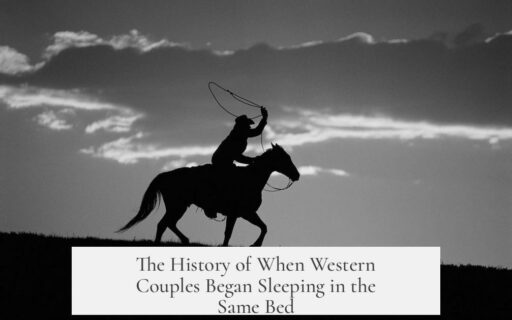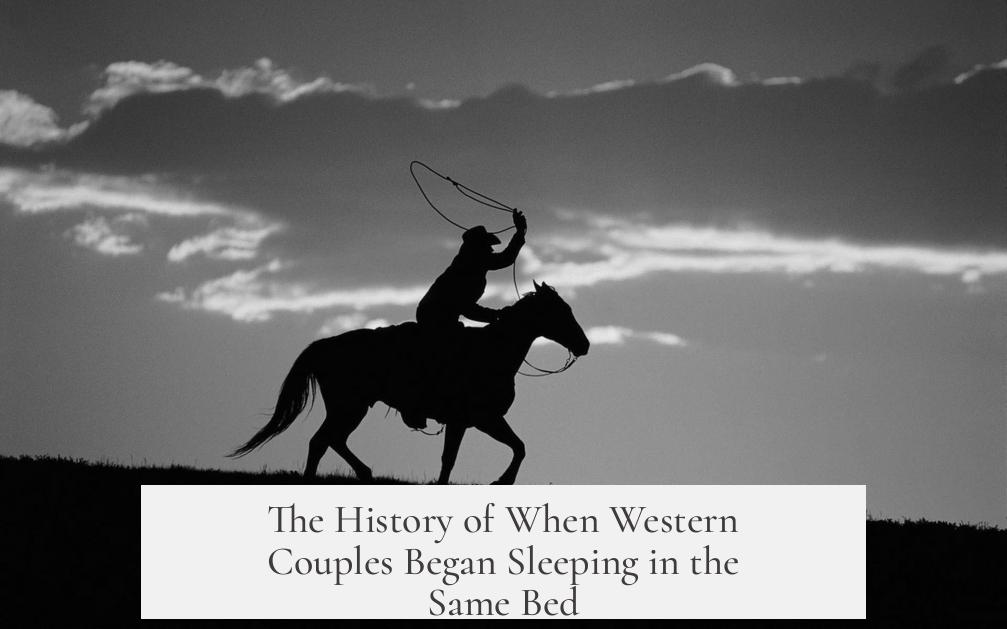Western couples generally began sleeping in the same bed historically, except for a notable trend of twin beds from the late 19th to mid-20th century. Bed sharing was common in pre-industrial Europe, often driven by economic necessity. Poverty meant families, including children and sometimes even livestock, shared beds and rooms due to limited resources. Separate beds did not begin as a widespread practice among the general population.
In reality, sleeping apart was rare for most couples until the late 1800s. The trend toward twin beds emerged in middle-class Western households during this period. Influenced by concerns over hygiene and disease prevention, 19th-century health promoters advocated for individuals to have their own beds. This was thought to improve sleep quality and reduce illness.
By the 1920s and 1930s, twin beds gained a new symbolic meaning. The practice represented a shift toward gender equality within marriage. Couples selected identical beds to demonstrate equal partnership, companionship, and personal autonomy beyond merely sexual relations. This political and social statement reflected changing attitudes about marriage roles.
Two major reasons often cause confusion about historical couple sleeping arrangements:
- Television and movies of the early to mid-20th century commonly portrayed married couples sleeping in separate beds to adhere to censorship and social norms, which does not reflect broader historical practice.
- Royalty and some aristocrats sometimes maintained separate sleeping quarters due to wealth and status, but these cases were exceptional and not representative.
Modern historians emphasize the positive intentions behind the twin bed vogue. Far from signaling marital problems, twin beds indicated egalitarian modern relationships at the time. The stereotype that twin beds imply a troubled marriage is a recent cultural misunderstanding, often perpetuated by media portrayals post-1950s.
| Period | Sleeping Arrangement | Reason/Context |
|---|---|---|
| Pre-Industrial Era | Couples and families shared beds | Economic necessity, limited resources, shared rooms |
| Late 19th – Early 20th Century | Twin beds gain popularity among middle class | Health concerns, hygiene, personal space |
| 1920s – 1930s | Twin beds symbolize equality in marriage | Social shifts toward gender equality, companionship |
| Mid 20th Century onward | Mixed norms, media depiction of separate beds | TV censorship, royalty’s influence, cultural stereotypes |
Key takeaways:
- Couples traditionally slept in the same bed; economic conditions largely dictated practices.
- The twin bed trend rose from health and social equality movements in the late 1800s to mid-1900s.
- Media and elite practices often misrepresent common sleeping arrangements historically.
- Twin beds once indicated positive marital equality, not marital problems.
When did Western couples start regularly sleeping in separate beds?
From the late 19th century to the mid 20th century, it became common among middle-class couples in the West to use twin beds. This trend lasted several decades before changing again.
Why did the twin bed trend begin in the late 1800s?
Health concerns were a major factor. Writers promoted separate beds to improve sleep quality and reduce disease spread. It was seen as a hygienic practice.
Did the use of twin beds reflect social changes?
Yes, by the 1920s and 30s, twin beds symbolized equality between men and women, showing marriage as a partnership beyond just physical intimacy.
Before twin beds became popular, did couples usually share a bed?
Yes, most couples and families shared beds out of necessity. It was common for parents and children, even along with animals, to sleep in the same space due to poverty.
Why do some people think Western couples always slept in separate beds?
This perception comes from TV portrayals before the 1980s and the habits of royalty or aristocrats, who often had separate bedrooms. These examples don’t represent the majority population.




